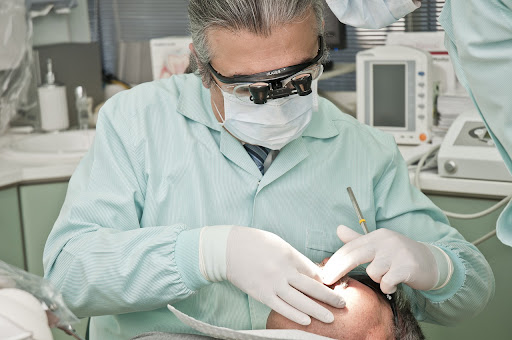
Having healthy, long-lasting teeth is something everyone wants. However, there are cases of dental emergencies that result in irreparable damage. The best way to prevent further damage to your teeth and gums and end any bleeding or pain is to have dental extractions. What symptoms, besides pain and bleeding, necessitate a trip to the emergency dental clinic? Don't worry, we've got a quick rundown of the kinds of situations that call for emergency dentistry.
Pus forms when bacteria enter the gum, the tip of the tooth root, or the bone that supports the tooth. An abscess in the tooth is the medical term for this problem. Some people may experience excruciating pain as a direct effect. It's important to remember, though, that some people may never feel pain. Because an abscess infection does not go away on its own, you should visit an emergency dental clinic as soon as possible if you observe pus leaking from a tooth or gums. The disease can also spread through the blood to other areas of the body. As a result, your dentist may advise a root canal or the dental extraction of the affected tooth as the best course of treatment.
Dental problems are often the cause of facial swelling on one side or the other. Common causes for such swelling are dental abscess, pericoronitis, salivary gland tumours, cellulitis, or mumps. Even if there is no pain, patients should not neglect the condition. To find out what's causing the swelling, your dentist will perform an examination. Infected tooth roots are a common cause of swelling at the base of a tooth. To stop the spread of infection, your doctor might advise an emergency dental extraction.
Some other causes of a loose tooth are localized infection and gum disease, as well as sports injuries. Since no pain may be present, you should not disregard a loose tooth. Get an oral exam and x-rays at the dentist. Get a professional opinion on any symptoms of nerve injury or infection before they get worse.
The degree of dental damage determines which treatment option is chosen. If the infection in the loose tooth has progressed to a critical level, your dentist may advise immediate dental extraction to prevent additional bone loss.
Evidence suggests that the likelihood of a root canal failing is far lower than previously thought. True, but they do happen. Root canal failure is likely if the tooth that was treated is extremely painful or if it drains yellow pus. Patients may also notice an unusual odour when brushing or flossing and discover that their gums have swollen.
The dentist will inspect the tooth and maybe take digital x-rays. In such cases, a root canal, root tip surgery, or extraction may be recommended. If the infection in the root canal is too serious, the repair is not possible. However, if you're interested in getting a dental implant, you can get one at a later time.
Have you put off getting those badly needed dental restorations for months? Do you have a toothache that seems to be getting worse over time? Perhaps the window of opportunity to salvage the affected tooth has closed.If the pain is only slight, a pain reliever should do the trick. However, extreme tooth pain accompanied by facial swelling is indicative of a more serious problem, such as gum disease or an abscessed tooth. Patients in this situation might feel a lump near the damaged tooth. You have no choice but to undergo an emergency dental extraction.
Remember that none of the aforementioned situations necessarily calls for dental extraction. Your dentist takes the ultimate decision after carefully analyzing all the circumstances. Dental extractions, whether surgical or nonsurgical, have simplified greatly in recent years. Dentists ensure their patients' comfort by administering local anaesthetics before beginning any procedure. Thankfully, with the help of emergency dental care, you can have the tooth removed and extracted without much trouble.
Stitches become necessary if the surgeon removes sections of the gums and surrounding bone during the surgery. Stitches help speed healing by keeping infections away following molar or premolar extractions. Most clinics plan a special appointment to remove stitches and monitor the operated site’s recuperation.
Dentists receive training in dealing with dental-phobic people, especially children. Patients can rest assured that they will experience less anxiety during their surgery.
Avoid needless delays in any dental extractions. Doing so often proves an open invitation for the infection to spread to other places of the body. Contact DentalGram if you need an emergency dental clinic appointment or are looking for a Dental Temp agency. Yes, tooth extraction is the final option for dentists. DentalGram has professionals on hand to assess your oral health and recommend the best course of action for treating your dental emergency. Call us now.